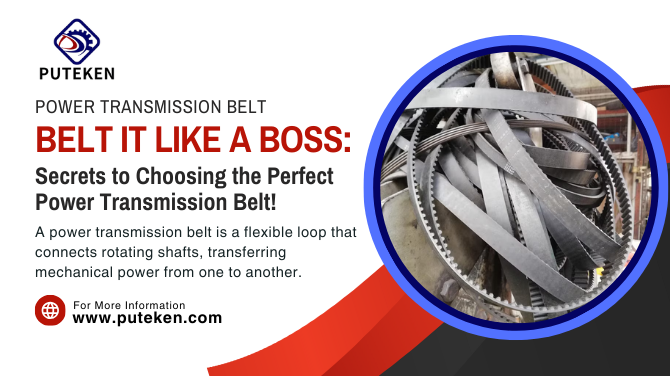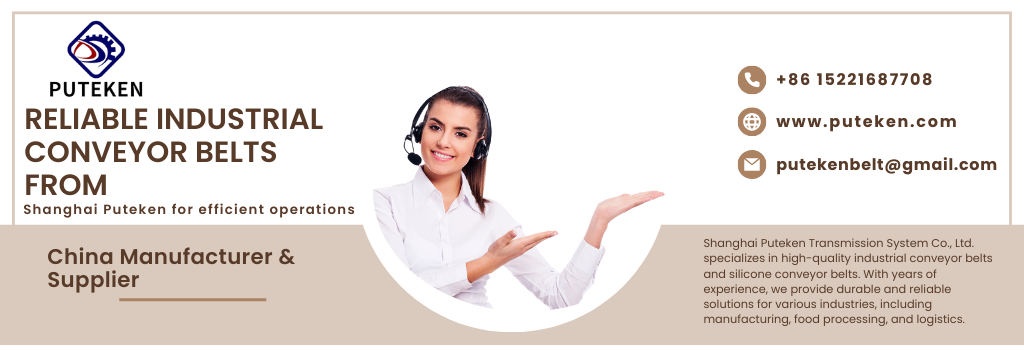
So, you’re in the market for a power transmission belt? Let’s be honest—belts might not be the flashiest part of your machinery, but they’re the unsung heroes that keep everything running smoothly as silk. If you pick the wrong belt, it could mean inefficiencies, breakdowns, or worse—complete machine failure. But don’t sweat it. We’ve got the secrets to help you belt it like a boss.
What Are Power Transmission Belts?
A power transmission belt is a flexible loop that connects rotating shafts, transferring mechanical power from one to another. Whether it’s in your car, your factory equipment, or a treadmill, if it moves, there’s probably a belt behind it doing the heavy lifting.
Why Does Choosing the Right Belt Matter?
Ever tried using a wrench when you needed a hammer? That’s what it’s like picking the wrong belt. The right power transmission belt means longer machine life, improved efficiency, and fewer maintenance headaches. The wrong one? Get ready for downtime and repair costs.
How Shanghai Puteken Leads the Market?
Shanghai Puteken Transmission System Co., Ltd. is a name trusted worldwide. With cutting-edge innovation, unbeatable quality control, and a catalog full of belt options, this is your go-to when performance matters most.
Understanding the Basics of Power Transmission
How Power Transmission Works?
It’s all about transferring energy. Power goes from the engine (or motor) to the driven parts via belts and pulleys. It’s a mechanical relay race, and the belt is the baton.
Types of Power Transmission Systems
- Mechanical
This is where belts, chains, and gears come into play. Simple and efficient. - Hydraulic
Uses fluid pressure to transfer power. Great for high-force applications. - Pneumatic
Compressed air drives the force. Think light-load tools and automation.
Where Belts Fit In the Puzzle?
Belts are key players in mechanical systems. They’re cost-effective, quiet, and adaptable—perfect for everything from industrial behemoths to precision tools.
Types of Power Transmission Belts
Let’s talk belt diversity—because one size doesn’t fit all.
- V-Belts
Shaped like—you guessed it—a “V”. Perfect for tight spaces and high torque. - Timing Belts
These have teeth! Ideal when synchronization is critical. No slipping allowed. - Flat Belts
Think old-school but modernized. Best for high-speed, low-torque needs. - Round Belts
Flexible and simple. Great for light-duty applications like packaging systems. - Ribbed Belts
Hybrid of flat and V-belts. Used in automotive engines and appliances.
Key Factors to Consider When Choosing a Belt
- Load Requirements
How much power are you transferring? Pick a belt that can handle the load without breaking a sweat. - Speed Considerations
Some belts thrive at high speeds, others… not so much. Choose accordingly. - Pulley Compatibility
Your belt and pulley need to be in sync like dance partners. Mismatched sizes? Expect slippage and wear. - Temperature and Environmental Factors
Will your belt be in a hot, dusty environment? Maybe a cold, damp one? Choose a material that can take the heat—or the cold. - Durability and Longevity
You don’t want to be replacing belts every few weeks. Invest in quality, and save in the long run.
Material Matters: What Belts Are Made Of
- Rubber
Affordable and flexible, but can degrade in extreme conditions. - Polyurethane
Tough, resistant to wear, and chemically resilient. Great for precision belts. - Neoprene
Stands up to oil, heat, and weather like a champ. - Fabric Reinforcement
Woven layers boost strength and durability. Think of it like Kevlar for belts.
Common Power Transmission Problems and How Belts Solve Them
- Slippage
A major culprit in energy loss. Proper belt tension and fit prevent it. - Noise and Vibration
A good belt runs whisper-quiet. If your system sounds like a freight train, it’s time for a change. - Wear and Tear
Cheap belts wear out fast. Premium ones, like those from Shanghai Puteken, stand the test of time. - Misalignment Issues
Quality belts compensate for slight misalignments, preventing breakdowns and saving your sanity.
The Shanghai Puteken Advantage
- Quality Assurance
Each belt goes through strict testing so you can rest easy. - Innovation in Design
From anti-static coatings to enhanced grip, Shanghai Puteken is always ahead of the curve. - Customized Belt Solutions
Need a belt that’s out of the ordinary? Custom jobs are a breeze with Puteken. - Global Support and Service
No matter where you are, expert advice and rapid delivery are just a click away.
Installation and Maintenance Tips
- Proper Tensioning
Too tight, and you wear out the belt and pulleys. Too loose, and you lose power. Goldilocks it. - Regular Inspections
Catch frays, cracks, or signs of wear early. Your belt will thank you. - Cleaning and Lubrication
A clean belt is a happy belt. Avoid debris buildup and use the right lubricant if needed. - When to Replace
If it looks tired—it probably is. Don’t risk a breakdown.
Belt Selection Mistakes to Avoid
- Ignoring Specifications
Always follow the manufacturer’s specs. Guessing never works out well. - Overlooking Environment
That belt may be great indoors—but throw in some rain, oil, or heat, and it’s game over. - Skipping Maintenance
Even the best belts need TLC. Don’t ignore them until it’s too late.
Real-World Applications of Power Transmission Belts
- Automotive
Timing and serpentine belts keep your engine purring like a kitten. - Manufacturing
Conveyors, presses, and drills rely on belts for precision and power. - Agriculture
From tractors to harvesters, belts keep the food chain running. - HVAC Systems
Air handlers and fans use belts for efficient airflow and comfort.
How to Calculate Belt Size and Tension?
Formulas You Should Know
Length = (2C) + (π * (D + d)/2) + ((D – d)^2)/(4C)
Where C = center distance, D = large pulley, d = small pulley.
Tools to Help You Get It Right
Use online calculators, tension gauges, and don’t forget your user manual.
Eco-Friendly and Energy-Efficient Belts
- Green Manufacturing
Shanghai Puteken uses environmentally responsible processes and materials. - Energy Savings Over Time
Less friction = less wasted energy = lower bills.
Shanghai Puteken’s Commitment to Sustainability
From recyclable materials to reduced emissions, they’re helping build a greener tomorrow.
Cost vs. Value: Making a Smart Investment
Initial Price vs. Lifecycle Cost
A cheap belt might save today, but cost more in repairs down the road.
When to Splurge and When to Save?
Critical systems? Go premium. Non-essential? Standard belts can do the trick.
Why Power Transmission Belts Are the Unsung Heroes?
- Quiet Efficiency
They work without applause, but everything stops without them. - Keeping the World Moving
From cars to coffee machines, belts make the modern world go ‘round.
Picking the perfect power transmission belt is part science, part strategy, and a dash of common sense. But with the right knowledge—and a solid partner like Shanghai Puteken Transmission System Co., Ltd.—you’re set up for success. Don’t leave your system’s performance to chance. Belt it like a boss, and watch your machines purr, your output rise, and your headaches vanish.
FAQs
- What is the best type of power transmission belt for heavy-duty machines?
V-belts or ribbed belts are typically preferred for their strength and torque-handling capabilities.
- How often should I replace my transmission belt?
It depends on usage, but a good rule of thumb is every 1–2 years with regular inspection.
- Can I reuse a transmission belt if it looks fine?
Not recommended. Micro-damage or wear may not be visible but can still lead to failure.
How do I know if my belt is too tight or too loose?
Check for tension using a gauge or follow the manufacturer’s guidelines. Too much or too little can damage both the belt and pulleys.
- What makes Shanghai Puteken’s belts better than others?
High-quality materials, strict testing, innovative design, and global support make them a top-tier choice.
